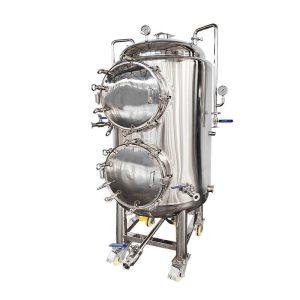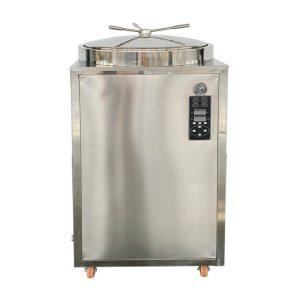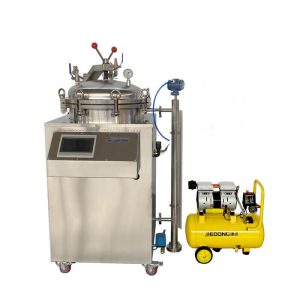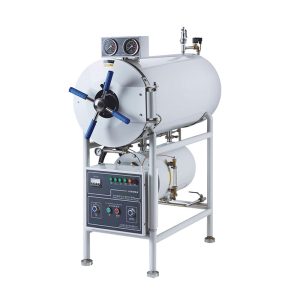Power Off and Release Pressure:
Before beginning the cleaning process, ensure that the high-pressure sterilizer is powered off and the pressure has been released to guarantee safety during the procedure.External Cleaning:
Gently wipe the external surfaces using a damp cloth or specialized cleaner to remove dust, dirt, and fingerprints.Interior of the Sterilization Chamber:
Open the sterilization chamber and thoroughly clean the trays, racks, and other surfaces inside. Use mild soapy water or specialized cleaning agents to ensure the removal of any residues. Be cautious not to use abrasive or corrosive cleaners that may damage the interior.Sink and Filters:
If the high-pressure sterilizer is equipped with a sink and filters, clean them regularly to prevent the accumulation of impurities.Check Seals:
Inspect the door seals and valve seals for any damage or signs of aging. If any issues are detected, promptly replace them to maintain proper sealing performance.Maintenance Records:
Keep a record of the cleaning dates, replacement dates for components, and any issues identified. This helps in tracking maintenance history and addressing potential problems in a timely manner.Calibration and Maintenance:
Periodically perform calibration and maintenance as recommended by the manufacturer to ensure the equipment’s performance and accuracy.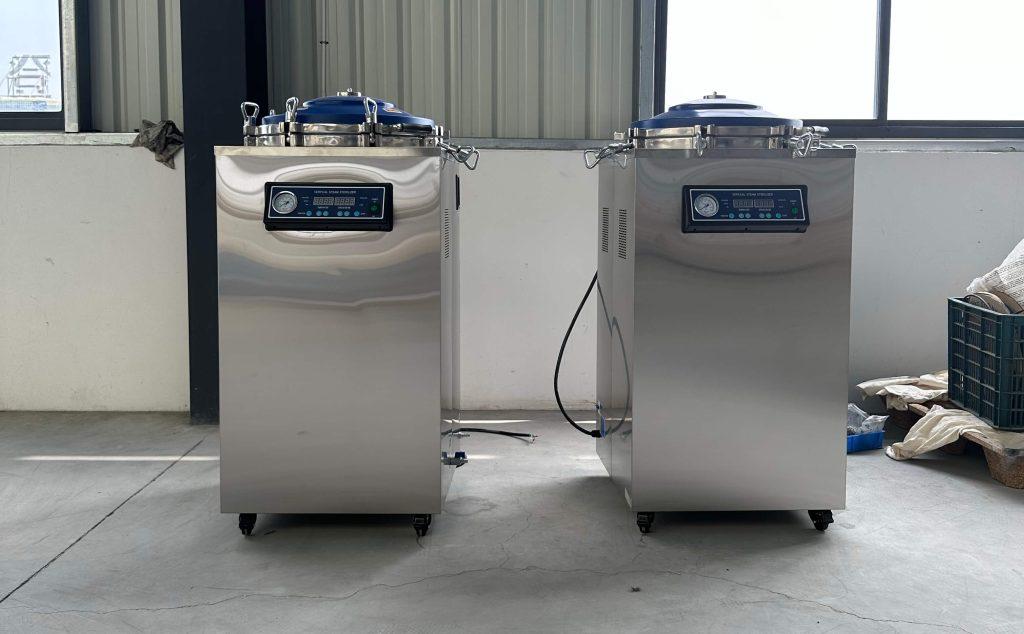
Autoclave
Why Autoclave is The Best Method of Sterilization
Autoclaving stands out as a highly effective method of sterilization for several reasons: 1.Comprehensive Microbial Elimination: Autoclaves use high-pressure steam, typically at temperatures above 121°C (250°F), which effectively destroys bacteria,
Why is autoclaving done for 15 minutes?
The reason high-pressure sterilization typically takes 15 minutes or more is to ensure the thorough elimination of various microorganisms, including bacteria, viruses, fungi, and spores. This duration has been determined
How an Autoclave Works
The high-pressure sterilizer functions based on a fundamental principle that leverages elevated temperature and pressure to achieve potent disinfection. Here’s a simplified explanation of its workings: 1.Steam Generation: The sterilization
How to clean autoclave monthly
Regularly cleaning and maintaining the high-pressure sterilizer each month is essential to ensure its proper functioning and effectiveness in disinfection. Here are the general steps and precautions for cleaning the
How Does an Autoclave Work
A high-pressure sterilizer operates by placing objects within a sealed chamber and introducing high-temperature, high-pressure steam. The working process can be summarized in the following steps: Loading the Objects: First,
What is Autoclave Sterilization
High-pressure sterilization is a process that utilizes high-pressure steamand elevated temperatures to eliminate microorganisms on the surface and withinan object. In this procedure, the object is placed within a high-pressurechamber

